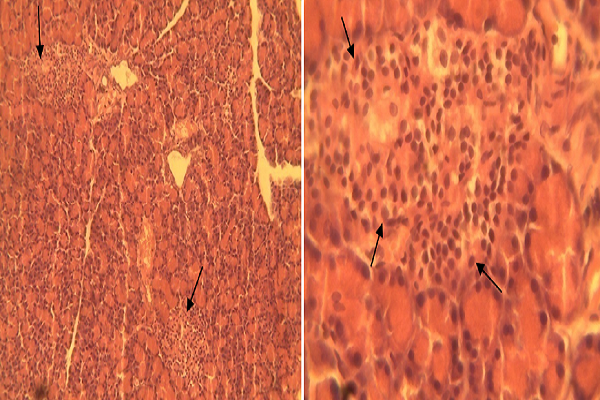Pharmacological potential of methanol extract of Anacardium occidentale stem bark on alloxan-induced diabetic rats
DOI:
https://doi.org/10.15419/bmrat.v5i7.456Keywords:
Anti-hyperglycemic, Antioxidant, Diabetes, Glibenclamide, PhytochemicalAbstract
Background: The anti-hyperglycemic potential of methanol stem bark extract of Anacardium occidentale (MSBEAO) was investigated using an alloxan-induced diabetic rat model. Alloxan administration induces the generation of free radicals which can affect antioxidant status resulting in the disruption of the β-cells of the pancreas. Therefore, this study examines the antioxidant potential of the plant extract and the ameliorating effect on the pancreas of alloxan-induced diabetic rats.
Methods: Diabetes was induced by intraperitoneal injection of 150 mg/kg body weight of alloxan monohydrate. MSBEAO, at a concentration of 100 or 200 mg/kg b.w. was orally administered to alloxan-induced diabetic rats and normal rats. The hypoglycemic effect, oral glucose tolerance test, and biochemical assay of alloxan-induced diabetic rats were assayed using standard procedures.
Results: Preliminary phytochemical screening of the extract revealed the presence of alkaloids, tannins, saponins, terpenoids, carbohydrates, and phenols at moderate concentrations. The lethality dose (LD50) of the plant extract was found to be equal to or less than 5000 mg/kg b.w. The hypoglycemic effect of the extract on the non-diabetic rats revealed a significant (p<0.05) decrease in the blood glucose concentration of animals administered with 1 g/kg b.w. of the extract, compared to normal control rats administered with normal saline. In the oral glucose tolerance test, the methanol extract exerted the highest response, similar to glibenclamide after 15 and 30 minutes of administration, compared to the control rats. The methanol extract yielded the highest blood glucose lowering effects after 9 days of treatment (p<0.05), compared to diabetic rats administered with normal saline and 0.3 mg/kg b.w. of glibenclamide. Administration of the extract at 200 mg/kg b.w. showed improved pancreas architecture and regeneration of the β-cells, compared with the pancreas of animals in the other groups.
Conclusion: The results of this study suggest that MSBEAO is a potentially effective agent for the management of diabetes which might result from the antioxidant-generating capacity of the stem bark.

Downloads
Published
Issue
Section
License
Copyright The Author(s) 2017. This article is published with open access by BioMedPress. This article is distributed under the terms of the Creative Commons Attribution License (CC-BY 4.0) which permits any use, distribution, and reproduction in any medium, provided the original author(s) and the source are credited.
